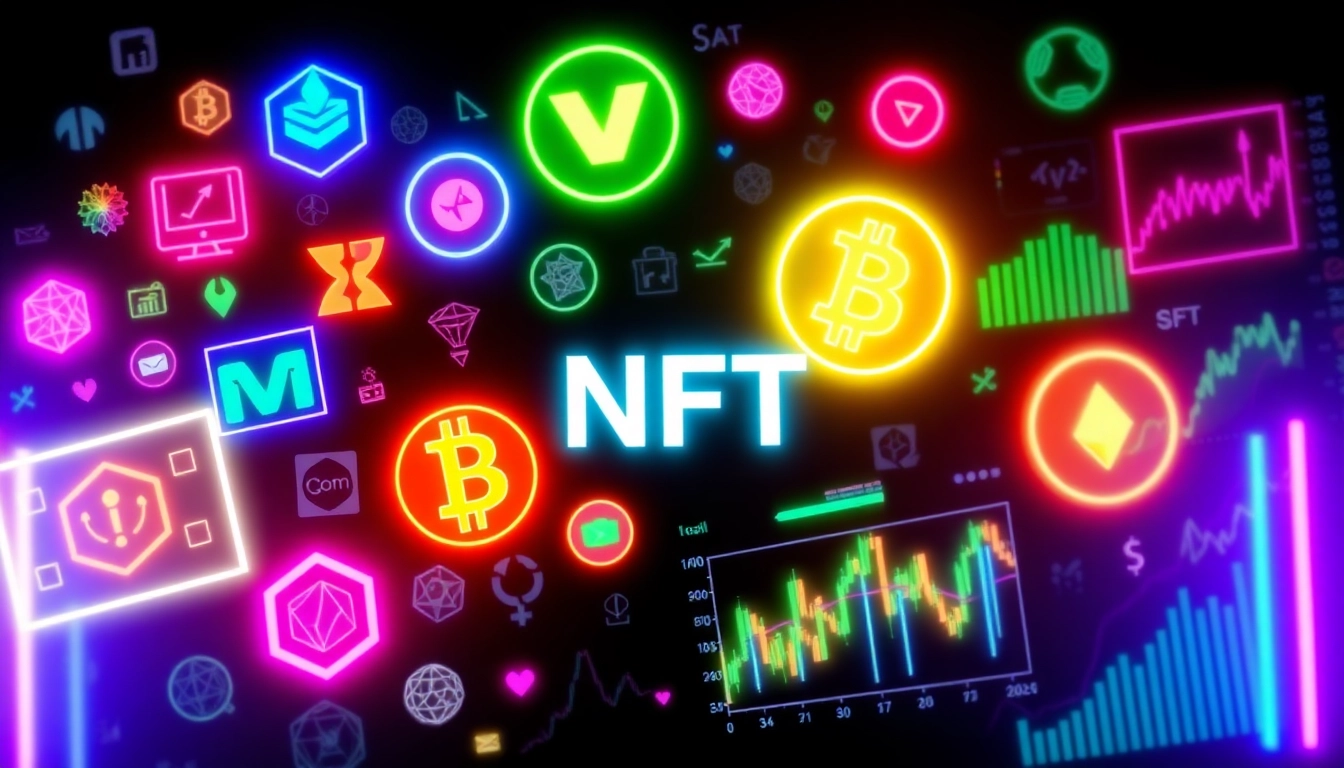Comprehensive Guide to Staking Solana in 2025: Maximize Your Crypto Rewards
As the DeFi ecosystem continues to expand rapidly, staking remains one of the most advantageous strategies for crypto holders seeking passive income and network participation. Among the leading Proof-of-Stake (PoS) networks, staking solana offers a compelling combination of high yield potential, fast transaction times, and robust security features. This comprehensive guide delves into the intricacies of Solana staking, explores modern platforms like Super that maximize your profitability, and provides actionable insights to help you navigate the opportunities and risks in 2025 and beyond.
Understanding Solana’s Proof-of-Stake Mechanism
Solana stands out in the crowded DeFi landscape as a high-performance blockchain optimized for scalability and speed. Its unique Proof-of-Stake (PoS) consensus mechanism, complemented by Tower BFT ( Byzantine Fault Tolerance), enables the network to process thousands of transactions per second with minimal latency and costs. Staking on Solana involves delegating your tokens to validator nodes that actively participate in the network’s consensus process, securing the blockchain by validating transactions and producing new blocks.
Unlike traditional Proof-of-Work (PoW) systems, PoS networks like Solana do not require energy-intensive mining. Instead, validators are chosen to create blocks based on the amount of SOL staked and other factors such as reputation and uptime. This model promotes decentralization, security, and sustainability. Stakeholders earn rewards proportionate to their delegated stake, supporting the network’s overall health and resilience.
For a detailed overview, visit Solana’s official staking guide.
Why Stake Solana in 2025: Key Advantages
Staking Solana in 2025 is more than just earning passive income; it is an active contribution to the decentralization and security of one of the fastest-growing blockchain ecosystems. Here are pivotal reasons to consider staking SOL now:
- Attractive yields: Current APYs for staking SOL hover around 7.5% to 10%, with potential for higher returns through optimized strategies. Platforms like Super aggregate and optimize rewards across multiple protocols, ensuring maximum profitability.
- Network security & decentralization: As a delegated validator, your stake helps secure the network against malicious attacks, fostering a resilient infrastructure vital for DeFi applications, NFTs, and enterprise integrations.
- Liquidity options: Liquid staking solutions like stSOL or similar derivatives allow you to access liquidity while earning staking rewards, adding flexibility to your investment strategy.
- Participation in ecosystem growth: Stakeholders often gain voting rights or governance influence in certain DeFi projects, aligning financial incentives with network development.
- Growth prospects: With ongoing upgrades, scalability enhancements, and increasing institutional interest, Solana’s staking yields and ecosystem value are expected to continue rising, making now an ideal time to participate.
In the context of global blockchain adoption, staking Solana aligns with your long-term earning and network support goals, especially considering the competitive advantage offered by platforms like Super.
Differences Between Solana Staking and Other Networks
While many blockchain networks offer staking opportunities, Solana’s architecture provides distinctive features:
- Speed and scalability
- Solana’s throughput surpasses most PoS chains, enabling high-frequency transaction validation and shorter yield cycle durations.
- Low transaction costs
- Staking on Solana incurs minimal fees, making frequent re-delegation or liquidity operations affordable and efficient.
- Fast unstaking process
- Platforms like Super facilitate swift withdrawal of staked tokens, often within hours, contrasting with the lengthy lock-up periods of networks like Ethereum or Cardano.
- Robust security and decentralization
- Solana’s validator network is highly distributed, and comprehensive audits ensure operator reliability and protocol integrity.
- Growth-driven ecosystem
- Solana supports a diversified DeFi landscape, from lending to NFT marketplaces, which amplifies opportunities for staking-based yields.
When compared to networks like Ethereum (with the upcoming Ethereum 2.0 upgrades) or Cardano, Solana’s high throughput and low latency offer superior short-term yield opportunities, especially when leveraging advanced platforms like Super that automate and optimize staking strategies.
Step-by-Step Guide to Staking Solana
Choosing a Reliable Staking Platform or Validator
The first step in your Solana staking journey is selecting a trustworthy platform or validator node. While you can stake directly via Solana’s official tools, many users prefer third-party platforms like Super for enhanced security, automation, and yield optimization. When evaluating validators or platforms, consider:
- Reputation & audits: Choose providers with verified security audits (e.g., Certik, Cyberscope).
- Performance metrics: Review historical uptime, reward consistency, and validator quality scores.
- Fees & rewards: Compare commission rates and potential net yields.
- User interface & support: Opt for platforms with intuitive interfaces and 24/7 support.
Super connects you with top validators and offers automatic reallocation to maximize your rewards, ensuring safety through industry-leading audits and compliance standards.
Setting Up Your Wallet for Solana Stake
To stake Solana, you’ll need a compatible digital wallet. Popular options include Phantom, Solflare, Ledger Live, and Trust Wallet. Follow these steps:
- Create or connect an existing wallet that supports Solana and staking functionalities.
- Securely back up your seed phrase and private keys in a safe location.
- Ensure your wallet software is updated to access staking features.
- On wallet interfaces like Phantom, navigate to the staking or delegation section.
For enhanced security, consider hardware wallets like Ledger that support Solana delegation via Ledger Live, ensuring your private keys remain offline.
Delegating Tokens Safely and Efficiently
Delegation involves assigning your tokens to a validator node without transferring ownership. In platforms like Super, delegation is simplified through a few clicks, with safeguards to prevent errors:
- Choose your validator from reputable sources.
- Specify the amount of SOL to stake.
- Confirm the delegation transaction — ensuring your wallet holds sufficient SOL to cover network fees.
- Monitor your delegation status through your platform dashboard.
Remember, validators with high uptime and good reputation are critical for earning reliable rewards. Avoid centralization risks by diversifying your delegation across multiple validators if possible.
Super offers an automated process that handles validator selection intelligently, reducing the complexity and ensuring maximum reward yields with minimal effort.
Maximizing Rewards and Managing Risks
Optimizing Yield Strategies on Super
Super employs advanced algorithms to enhance your staking returns by dynamically reallocating your assets across the top DeFi protocols and validator pools. Features include:
- Auto-compounding: Reinvest rewards for higher yields.
- Cross-chain staking: Stake assets across multiple ecosystems like Solana, Ethereum, Arbitrum, and more.
- Dynamic APR tracking: Adjust allocations based on real-time APY fluctuations to ensure optimal returns.
- Custom strategies: Create or follow community-shared staking strategies tailored toward your risk appetite and return goals.
Using platform tools and dashboards, you can set automated rebalancing schedules and safety parameters to guard against market volatility.
Understanding Potential Risks and How to Mitigate Them
While staking Solana presents attractive rewards, it is essential to understand associated risks:
- Selecting reputable, audited validators minimizes this risk.
- Slashing penalties: Few validators incur slashing—be sure to delegate to validators with proven performance.
- Network upgrades & bugs: Stay informed about protocol upgrades and community updates.
- Market volatility: Sudden price drops can impact overall portfolio value, though yield remains in SOL or derivatives.
Mitigate risks by diversifying your delegation, leveraging platforms like Super that employ smart routing and continuous monitoring, and maintaining an active awareness of network health updates.
Monitoring Your Staking Performance and Rewards
Regularly tracking your staking activity ensures transparency and optimizes earning potential. Use tools like:
- Platform dashboards within Super for real-time reward analytics.
- Wallet explorers for transaction verification.
- Validator reputation scores and historical performance data.
- Alerts for network events or protocol upgrades that may impact staking rewards.
This ongoing monitoring empowers you to make data-driven decisions, re-delegate, or adjust strategies proactively.
Advanced Staking Strategies for Solana Enthusiasts
Liquidity Pool Integration and Restaking Opportunities
Innovative platforms like Super enable integrating staking with liquidity provision. By depositing SOL into liquidity pools, you can earn yields from trading fees, incentives, and re-staking combined rewards. Restaking further amplifies earnings:
- DeFi vaults: Automate deposits into yield farming pools that include SOL and other tokens.
- Cross-protocol liquidity: Move assets seamlessly across exchanges and lending protocols for optimal returns.
Using DeFi Vaults for Automated Rewards
Super’s vaults support creating automated strategies, where existing staking tokens like stSOL or derivatives are actively managed to compound rewards without manual intervention. This automation reduces risk and maximizes yield by continually reallocating across high-APY pools.
Long-term Staking and Compounding Approaches
Adopting a disciplined, long-term staking plan involves:
- Compounding rewards periodically to harness the power of exponential growth.
- Rebalancing across validators and pools to avoid slashing or performance dips.
- Integrating restaking strategies for doubling yield, where permitted by the protocol.
Platforms like Super simplify these advanced tactics, allowing both retail and institutional users to implement complex strategies with ease.
Future Trends and Updates in Solana Staking Ecosystem
Upcoming Protocol Updates and Enhancements
As Solana continues to innovate, key developments include:
- Shard improvements and throughput increases.
- Integration of more DeFi primitives like synthetic assets and advanced liquidity pools.
- Enhanced security features and validator incentives to support decentralization.
- Increased support for derivatives and restaking derivatives like stSOL.
Staking platforms are adapting quickly; platforms like Super proactively incorporate these upgrades, providing users with continuous access to cutting-edge staking opportunities.
Regulatory Environment and Its Impact
Regulations surrounding crypto staking are evolving globally. Jurisdictional differences influence staking returns, taxation, and access. Notably:
- Some countries impose withholding taxes or require KYC for large operations.
- Institutions may seek regulated custody solutions and compliance assurances.
- Platforms like Super are investing in compliance and transparency to accommodate institutional clients.
Staying informed about local laws and utilizing platforms that adhere to global standards ensures secure participation in staking activities.
Emerging Opportunities in DeFi and Institutional Staking
The future of Solana staking lies in deepening DeFi integration, leveraging synthetic assets, and institutional collaborations. Trends include:
- Tokenized index funds tracking Solana and related assets for diversified exposure.
- Automated yield strategies combining staking, liquidity pooling, and derivatives.
- Institutional-grade staking pools with higher security, compliance, and lock-up flexibility.
Super’s roadmap for 2025 highlights such innovations, aiming to provide scalable, secure, and user-friendly staking infrastructure to meet growing industry demands.




